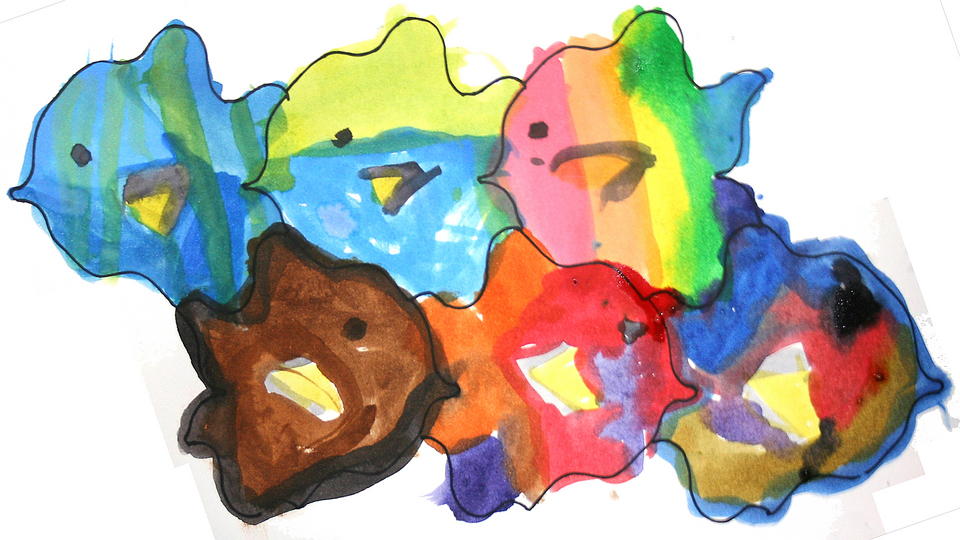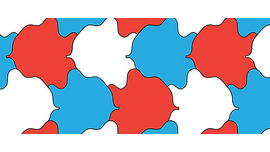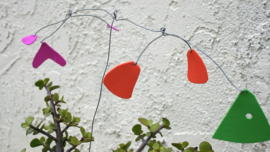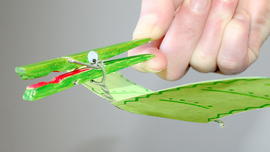Swimming fish tessellation

Tessellation art is a repeated shape that fits together like a puzzle, made popular by the artist M.C. Escher.
You'll Need
- Tracing paper
- White paper
- Black marker
- Paint
Time
30 minutes
Learning Stages

Kids will learn about tessellations in this art project, and even learn how to make one of their own. A tessellation is a repeated shape that fits together like a puzzle, with no overlaps or gaps. This style of art was made popular by the artist M.C. Escher.
Prep
Create a tessellation template that the kids can trace. I’ve included two tessellation templates that you can print and cut out, along with instructions on how to create your own tessellations. Cut the template shape out of thicker paper if possible, which makes it easier for kids to trace.
Drawing
Have kids trace their template shape onto a piece of paper. They need to make sure the shapes fit together perfectly before they trace them.
Have them do a horizontal row first. (For very young kids you may want to trace the shapes for them and just have them try to add one shape at the end of the row.) When they move down to do another row, they’ll need to flip the template over, so that the fish or bird shapes are facing the opposite direction. When they are done tracing they can color them in.
Making your own tessellation
If you have a drawing program on your computer it’s fairly easy to make your own tessellation. But even if you don’t, I’ve provided instructions for creating your own tessellation using tracing paper. The shapes you draw in a tessellation tend to be pretty obscure. Part of the fun is figuring what the shape could be turned into. Birds and fish make for easy options because they come in so many different shapes.












